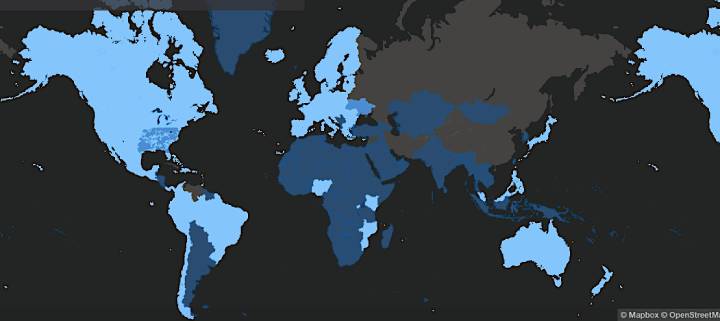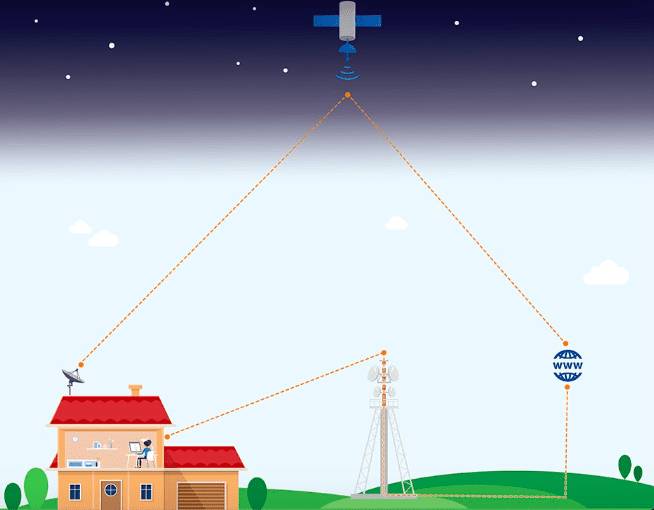 SpaceX’s Starlink broadband service reported more than 2 million subscribers as of mid-September but suffered an hour-long network outage on Sept. 13. (Source: Starlink)
SpaceX’s Starlink broadband service reported more than 2 million subscribers as of mid-September but suffered an hour-long network outage on Sept. 13. (Source: Starlink)
PARIS — The outage of the Starlink satellite network on Sept. 13 lasted no more than about an hour but is an example of why having backup capacity is essential for some business applications, industry officials said.
Starlink has been making inroads in several vertical markets, including maritime, that were once the exclusive preserve of satellite systems that cannot match Starlink’s latency or even, in some cases, it’s throughput to a given ship. What these heritage providers did have was a network with sufficient redundancy to allow them sign availability guarantees with customers.
These guarantees, known as Committed Information Rate (CIR) or service-level agreements, are not offered by Starlink, which tells customers that the Starlink constellation is inherently robust because it consists of several thousand satellites, and at any rate provides bandwidth that exceed any CIR package available.
But the Sept. 13 outage served as a reminder that multi-network backup, not just the inherent satellite backup of a large constellation, has not lost its pertinence.
“Resilience of the architecture is key,” said Steve Nixon, chief executive of the Smallsat Alliance. Addressing the Sept. 20 New York Space Business Roundtable, organized by the Society of Satellite Professionals International, SSPI.
“Can we take a punch and still operate through that? Hybrid architecture and the outer net [a blending of terrestrial- and space-based assets] is responsive to those needs. You have to add additional nodes to the architecture to bring resilience.”
 EchoStar said its HughesNet Fusion bundled satellite/terrestrial broadband service has reduced customer churn and increased monthly service revenue. It also adds resilience for enterprise customers. (Source: Hughes)
EchoStar said its HughesNet Fusion bundled satellite/terrestrial broadband service has reduced customer churn and increased monthly service revenue. It also adds resilience for enterprise customers. (Source: Hughes)
EchoStar’s Hughes Network Systems is stitching together redundant networks with its Hughes Fusion package, which combines terrestrial LTE and satellite connectivity; and through its service agreement with the OneWeb constellation in low Earth orbit. Hughes is a OneWeb shareholder.
“We’re cognizant of the [Starlink] outage and that is one point of differentiation that we would highlight between us and Starlink,” said Joe Bernabucci, director of strategy and market intelligence at Hughes. He said Hughes’ Fusion’s managed services offer to enterprise customers is designed to select terrestrial, LEO or GEO solutions automatically, depending on the use case.
“You don’t transport 20 diamonds the same way you’d transport 20 washing machines,” Bernabucci said.
Maritime connectivity provider Speedcast has been one of the industry’s most vocal supporters of Starlink, saying that even without a CIR other guarantee, it is what customers want, especially given its low latency compared to the response time of GEO-orbit satellites.
“Starlink is incredible. It really does an amazing job,” said William Mudge, Speedcast vice president of engineering operations. “But at the end of the day, it’s a Ku-band link, so it’s affected by rain fade, whereas C-band satellites are less affected.” L-band satellite links such as those offered by Iridium and Inmarsat also are designed to withstand rough weather.
Stil, Mudge said Starlink, with which Speedcast has a service distribution agreement, is helping Speedcast bring in new customers that up to now would not have been interested in a satellite broadband solution.
“Starlink has changed how we have to look at our customers,” Mudge said.
Mudge acknowledged that Starlink “has its issues from time to time,” although a full network outage is rare. “This was a software issue and they’ve had other software issues that have affected selected areas.
“We look at our customers at, say, an energy site. Can they suffer an outage like this? No. It’ll bring services down. You have to have that layered approach, to have a geostationary satellite to augment what Starlink or OneWeb does,” Mudge said.
Read more from Space Intel Report.
Explore More:
Multi-Orbit vs. Starlink: Is Disruption Coming for the Disruptor?
For Satellite Industry, Virtualization and Interoperability Can’t Happen Soon Enough
Overcoming Starlink Advantages and the Mega-Constellations: Four Competitive Edges of Software-Defined Ground
Fleet Operators ABS, Intelsat, SES, Eutelsat: Is Starlink’s Vertical Integration a Long-Term Competitive Advantage?
